
“The Fall of Icarus” is one of the most famous paintings by the Dutch artist Peter Brueghel the Elder. This is the only picture written by Bruegel on the mythological plot. The belonging of the picture of Bruegel’s brush is disputed by experts – most likely, it is a question of a later copy from the lost original.
The composition of the picture is very original: in the foreground are depicted secondary figures, while the main character – Icarus – does not even immediately strike the eye. Only carefully looking, you can see sticking out of the water feet and a few floating over the surface of the sea feathers. There is also no Daedalus in the picture: only the shepherd’s gaze, directed to the sky, allows to guess in which direction he disappeared. The fall of Icarus goes unnoticed: neither the shepherd looking up, nor the plowman who lowered his eyes to the ground, nor the fisherman, too focused on his fishing rod, see him. The ship passes by, but the faces of the sailors are facing in the opposite direction; However, if one of them noticed the sinking, then it is unlikely that a huge ship will slow its course for the sake of its salvation.
However, there is one unobtrusive creature in the picture, to whom the fate of Icarus should be not indifferent. This creature is a gray partridge, sitting on a branch on the edge of a cliff. And in this detail, Bruegel follows the myth in the account of Ovid: in the Metamorphoses it is said that Father Ikar Daedalus was forced to flee to Crete after he killed his young nephew Perdix. Perdix was a disciple of Daedalus and found such brilliant abilities that Daedalus began to fear rivalry on his part. He pushed Perdix out of the Acropolis of Athens, but Athene took pity on the boy and turned him into a partridge. So the little partridge has every reason to gloat, watching how the son of her abuser perishes: for her, the death of Icarus is not a tragic accident, but a just retribution overtaking Daedalus.
Despite such close attention to the smallest details of the plot, the picture of Brueghel is not only an illustration of the ancient myth, but also a magnificent landscape. Bruegel continues here the picturesque traditions of the first landscape painter of the Netherlands – Joachim Patinir. In the landscapes of this artist people were often portrayed as small, barely noticeable, and the main role in the composition was played by the landscape. The influence of Patinir can also be seen in the color scheme of the picture: for example, his landscapes are characterized by a foreground image in brown tones, medium – in green, distant – in blue.
A special place in the composition of the picture is taken by the sun. Pale, translucent, sitting over the horizon, it, nevertheless, rivets to a glance. And this is not accidental: the sun is the full “hero” of the picture: it was his rays that caused the death of Icarus. The whole landscape appears before us in its illusive light, and the composition is built around three key points: the figures of the peasant in the foreground, the sinking Icarus and the solar disk on the horizon. At the same time, experts note that the golden reflections of the sun on the water, giving the landscape a special charm – just the effect of aging lacquer. Initially, the painting had a colder color.
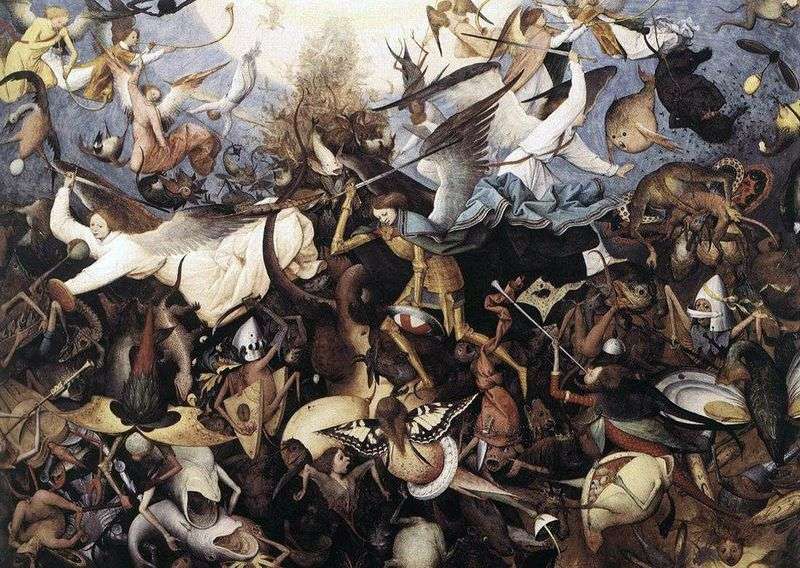 The Fall of the Rebellious Angels by Peter Brueghel
The Fall of the Rebellious Angels by Peter Brueghel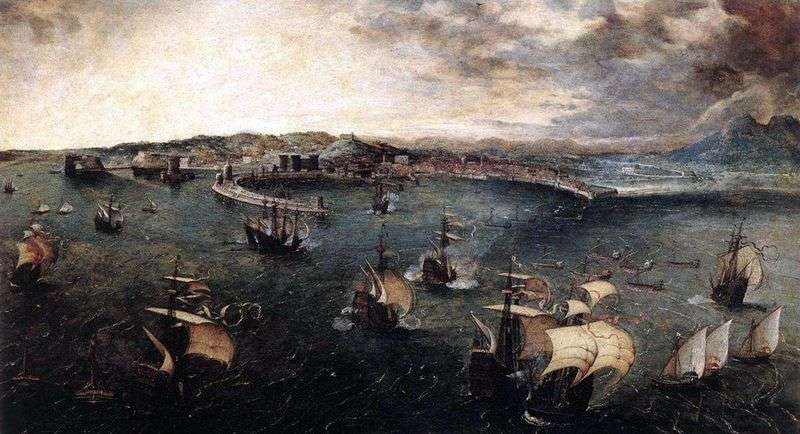 Naval battle in the harbor of Naples by Peter Brueghel
Naval battle in the harbor of Naples by Peter Brueghel Icarus Fall by Pablo Picasso
Icarus Fall by Pablo Picasso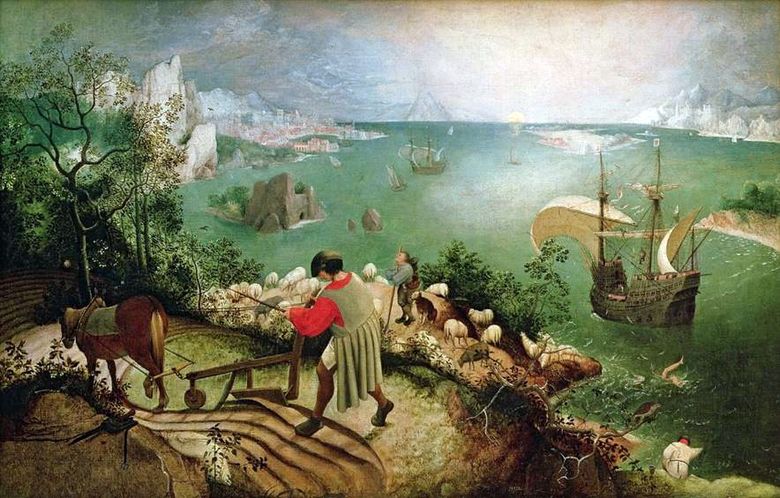 La chute d’Icare – Peter Brueghel
La chute d’Icare – Peter Brueghel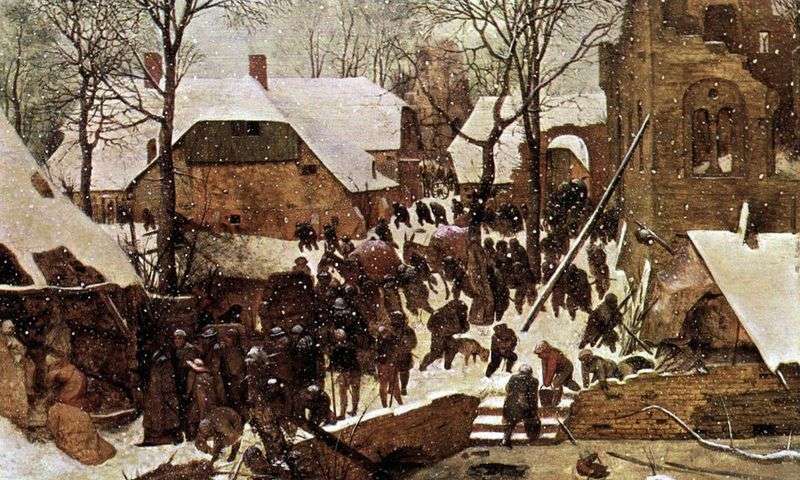 The Adoration of the Magi in the Winter Landscape by Peter Brueghel
The Adoration of the Magi in the Winter Landscape by Peter Brueghel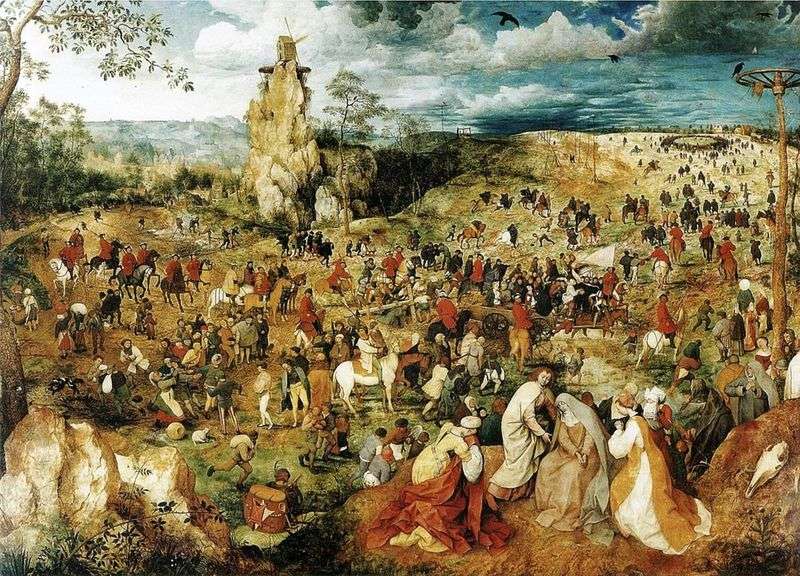 The Way to Calvary by Peter Brueghel
The Way to Calvary by Peter Brueghel The Parable of the Sower by Peter Brueghel
The Parable of the Sower by Peter Brueghel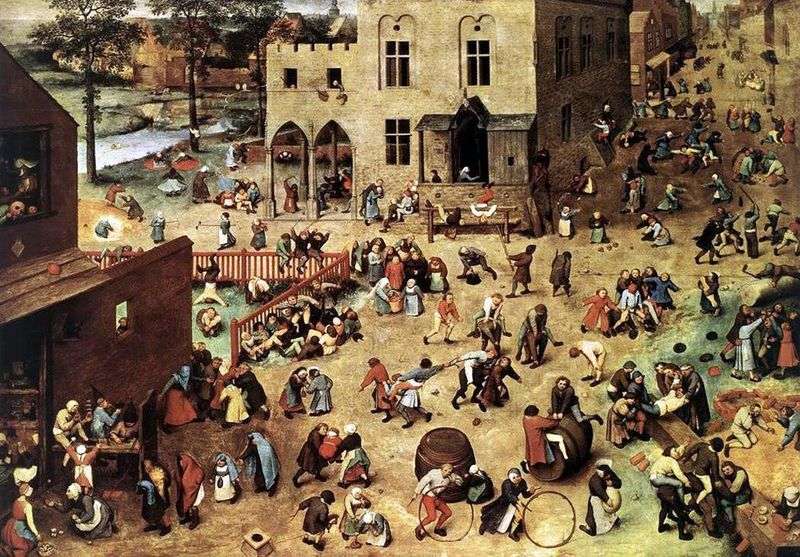 Children’s Games by Peter Brueghel
Children’s Games by Peter Brueghel